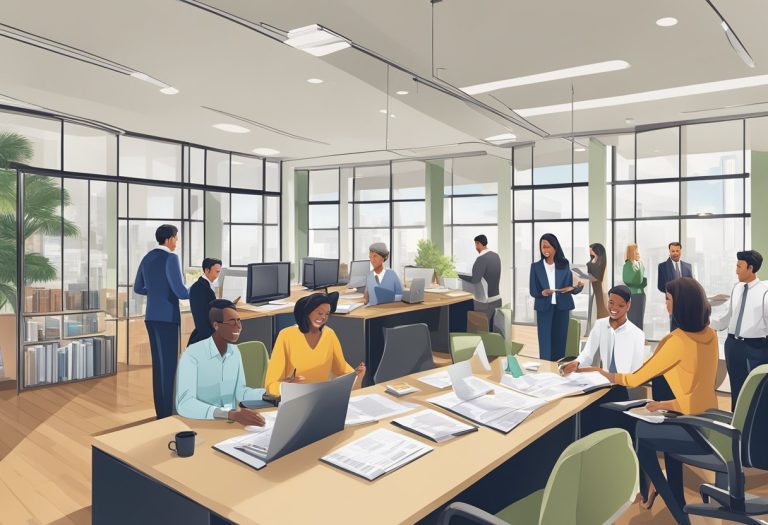What Are the Disadvantages of Buying a Multifamily Home? Understanding the Investment Risks and Challenges
What Are the Disadvantages of Buying a Multifamily Home? Understanding the Investment Risks and Challenges
Multifamily homes, which include duplexes, triplexes, and apartment buildings, offer a unique opportunity for investors and homeowners alike. They often come with the lure of rental income and the potential to build a real estate portfolio. However, multifamily property ownership carries distinct disadvantages that are important to consider before making a purchase. The responsibilities of managing tenants, maintaining the property, and contending with possible legal complexities can be daunting.
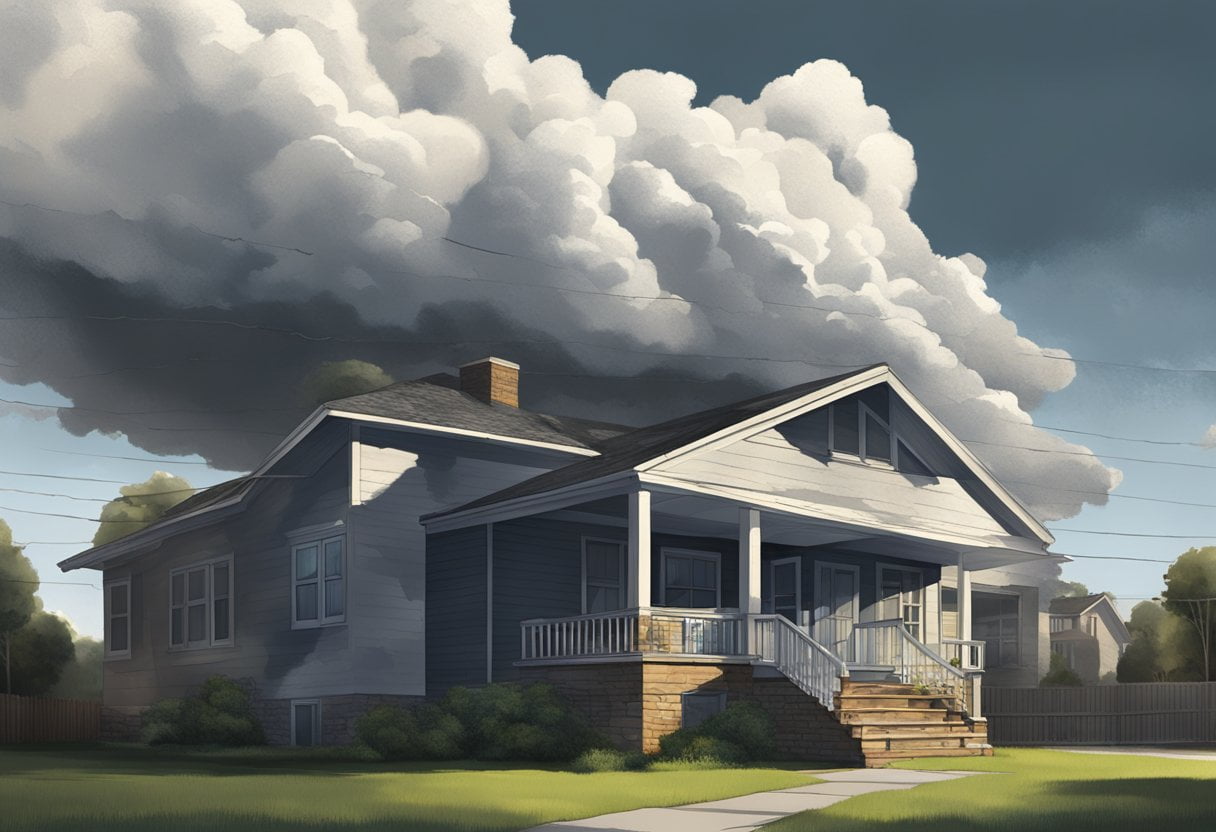
While the financial benefits can be significant, the entry price for multifamily homes is typically higher than that of single-family homes, and the required down payment may also be more substantial. Potential landlords must weigh the risks of vacancies, tenant turnover, and the impact of local market conditions on rental income and property value. Ownership extends beyond the mortgage, with operational costs, unexpected repairs, and the need to understand and comply with housing regulations often surprising new investors. When it’s time to sell, exit strategies and resale considerations must be factored into the investment decision.
Key Takeaways
- Multifamily homes come with increased financial burdens and management responsibilities.
- Anticipating operational costs and understanding local housing laws are critical.
- Developing a clear exit strategy is vital for long-term investment success.
Understanding Multifamily Homes
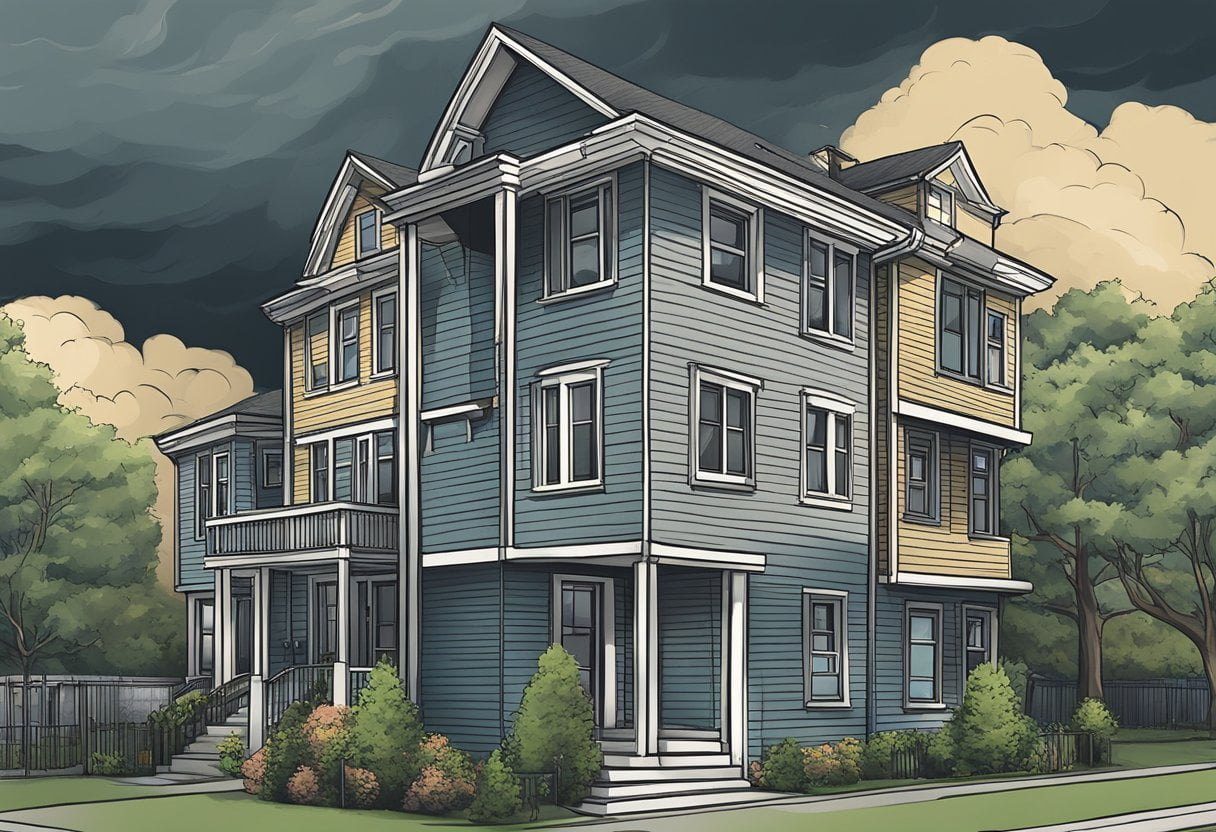
When you explore the realm of real estate investment, understanding the nuances of a multifamily home is crucial. This section will guide you through what multifamily homes are, their types, and how they differ from single-family homes.
Definition and Types of Multifamily Homes
A multifamily home is a single building that’s designed to house multiple families living separately. These homes fall into various categories based on the number of units they comprise:
- Duplex: A building with two separate living units
- Triplex: A building with three independent living spaces
- Quadplex: A building with four distinct residences
Larger buildings, such as apartment buildings, may contain numerous units. Condominiums are similar to apartments, but the units are owned individually rather than rented from a single apartment owner. Townhouses, which are multilevel units sharing one or two walls with adjacent properties, can also be part of a multifamily living situation although they often resemble single-family homes in layout and design.
Comparing Multifamily Homes to Single-Family Homes
In contrast to multifamily homes, a single-family home is designed for one family or household and does not share space with any other residents. Here are some specific distinctions to keep in mind:
| Features | Multifamily Home | Single-Family Home |
|---|---|---|
| Ownership | Can be one owner of the entire building or individual owners per unit (condominiums) | Typically one owner |
| Privacy | Less privacy, shared common areas | More privacy, no shared living spaces |
| Maintenance | Shared responsibility for common areas, individual responsibility for each unit | Sole responsibility of the owner |
| Investment | Potential for rental income from multiple units | Rental income limited to the entire home or parts, like a basement suite |
Multifamily homes often come with landlord responsibilities and shared expenses for maintenance, while single-family homes offer more control over the property and maintenance decisions but might not offer the same income potential.
Financial Considerations
When purchasing a multifamily home, you must closely examine the financial responsibilities entailed. From differing mortgage requirements to the nuances of rental income affecting cash flow, understanding the financial landscape is pivotal in making an informed decision.
Mortgage and Financing Options
Securing financing for a multifamily property often involves more stringent requirements than a single-family home. For an investment property, lenders typically require a larger down payment—sometimes 25% or more. You may find various financing options available, such as a conventional mortgage, FHA, or VA loans for smaller multifamily properties, but each comes with its specific criteria and interest rates.
Understanding Down Payments and Interest Rates
The down payment for a multifamily home will impact your interest rates and, by extension, your monthly mortgage payments. A higher down payment usually secures a lower interest rate, which can make the investment more manageable within your budget. Conversely, a lower down payment may lead to higher interest rates and thus increased monthly expenses.
The Impact of Rental Income on Cash Flow
Rental income from occupying tenants can significantly bolster your cash flow, helping to cover the mortgage and operating expenses. However, it’s essential to consider that this income stream might fluctuate due to tenant turnover or vacancy. You’ll need to balance potential rental income against your regular financial obligations to ensure a positive cash flow. This balance is critical to maintain, especially if the property requires unexpected repairs or maintenance.
Advantages and Disadvantages of Buying A MultiFamily Home
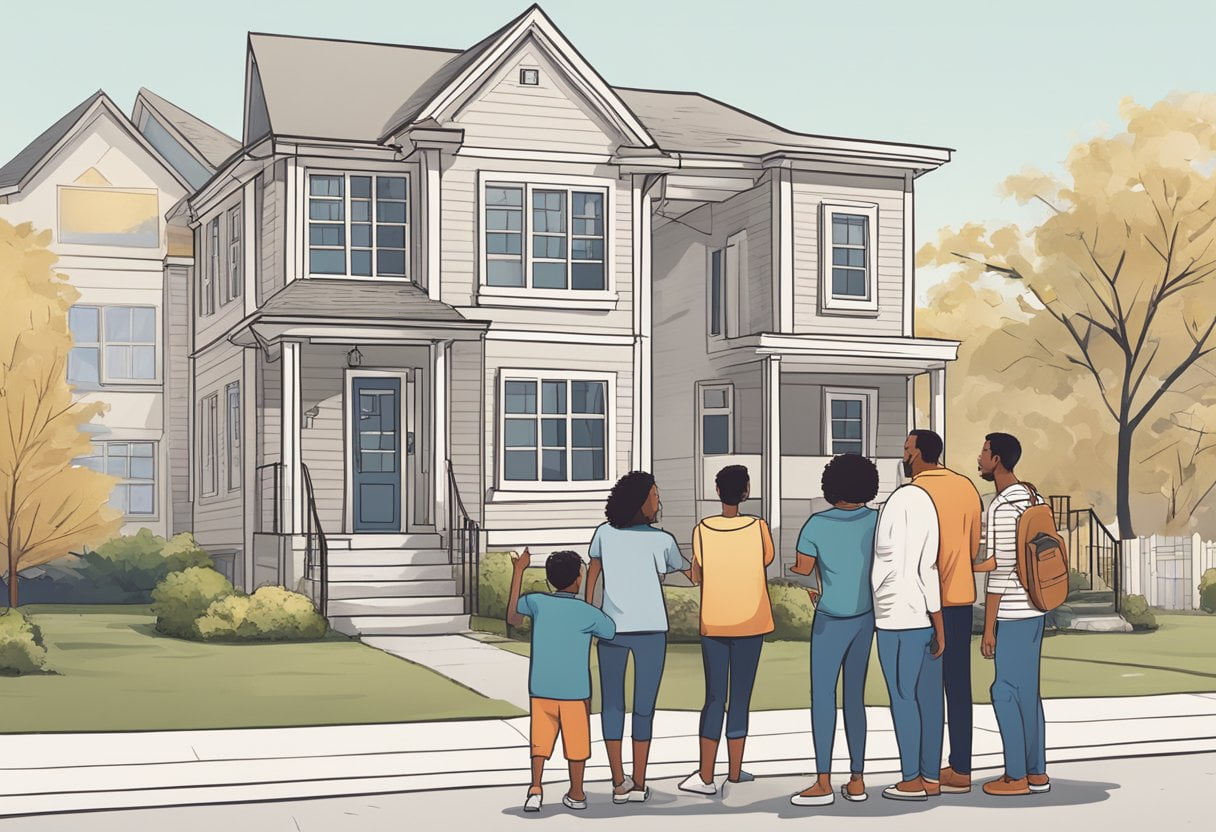
When investing in multifamily homes, you’re presented with the opportunity for passive income generation and property value appreciation, but you must also grapple with the demanding aspects of property management and upkeep.
Potential for Passive Income and Appreciation
Pros:
- Passive Income: Your multifamily property yields a steady stream of passive income through rental payments, enabling you to cover mortgage and operational costs, often with surplus profits.
- Appreciation: Historically, real estate has a tendency to appreciate over time, potentially increasing your investment portfolio’s value and providing opportunities for future equity financing or sales at a profit.
Cons:
- Market Risks: Appreciation isn’t guaranteed; changes in the market could slow growth or even decrease the property’s value, impacting your investment portfolio.
Challenges in Property Management and Maintenance
Pros:
- Economies of Scale: Managing one multifamily home often incurs lower per-unit maintenance costs compared to managing multiple single-family homes.
Cons:
- Maintenance Costs: Though potentially lower on a per-unit basis, maintenance costs can be significant in total, affecting your bottom line.
- Property Management: Multifamily properties are typically more management-intensive than single-family homes, requiring more of your time or the added expense of a professional property manager.
Risks and Responsibilities
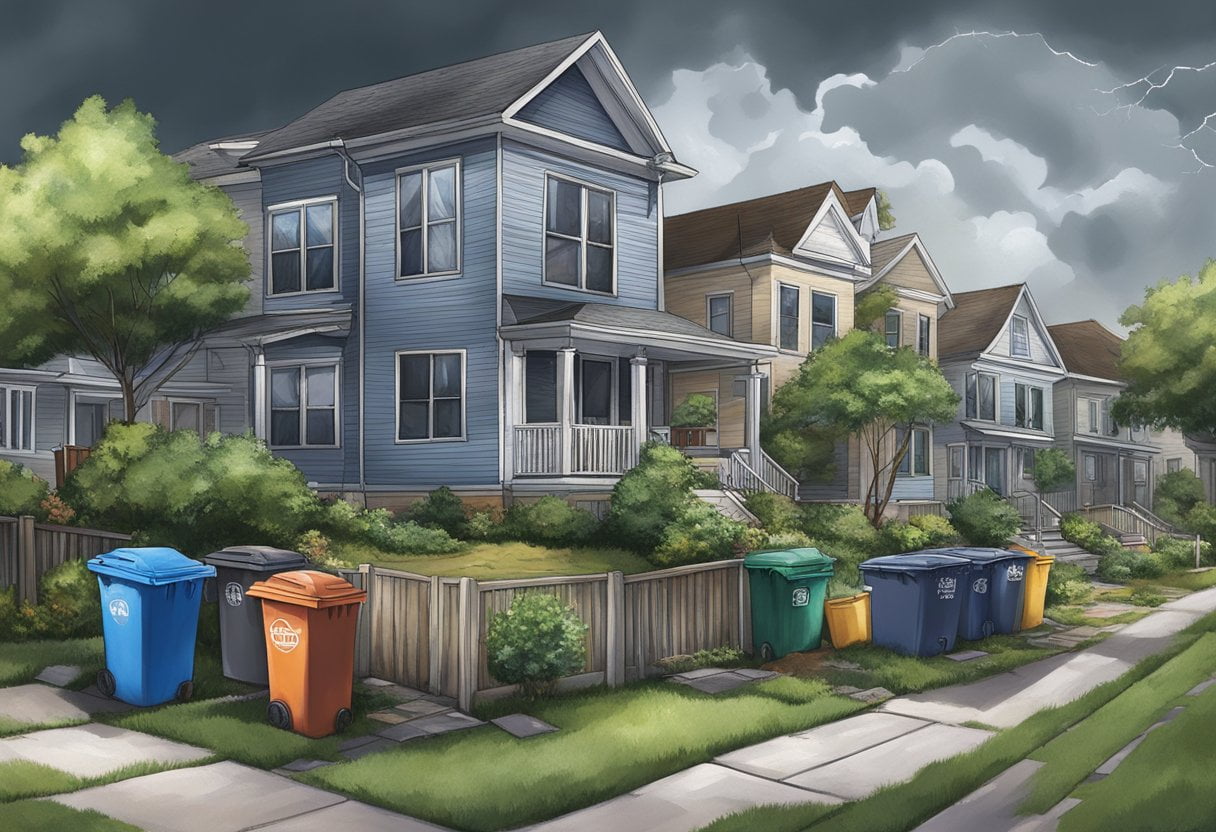
In the realm of real estate investing, buying a multifamily home introduces both opportunities and obligations. You must balance the risks inherent in being a landlord and comply with a complex web of legal regulations, while also managing the market’s unpredictable nature.
Being a Landlord and Dealing with Tenants
As a landlord, you shoulder the responsibility for the well-being and satisfaction of your tenants. Tenant turnover can be costly and time-consuming, thus maintaining good tenant relationships is crucial. Your duties will extend to:
- Regular maintenance, ensuring the property is habitable and safe.
- Dealing with emergencies, which may occur at any hour.
- Screening and managing tenants, a process that involves legal paperwork and occasional conflict resolution.
Legal Regulations and Market Risk Factors
Real estate investing must account for various legal regulations that govern property rental:
- Local housing laws and building codes that dictate rental practices and property standards.
- Fair housing legislation designed to prevent discrimination.
Additionally, you face market risk factors:
- Economic downturns can impact tenant job stability and your rental income.
- Changes in neighborhood desirability could affect property value and attractiveness to potential tenants.
Navigating these risks requires diligence, knowledge, and a degree of preparedness for the unexpected.
Evaluating Property Location and Neighborhood
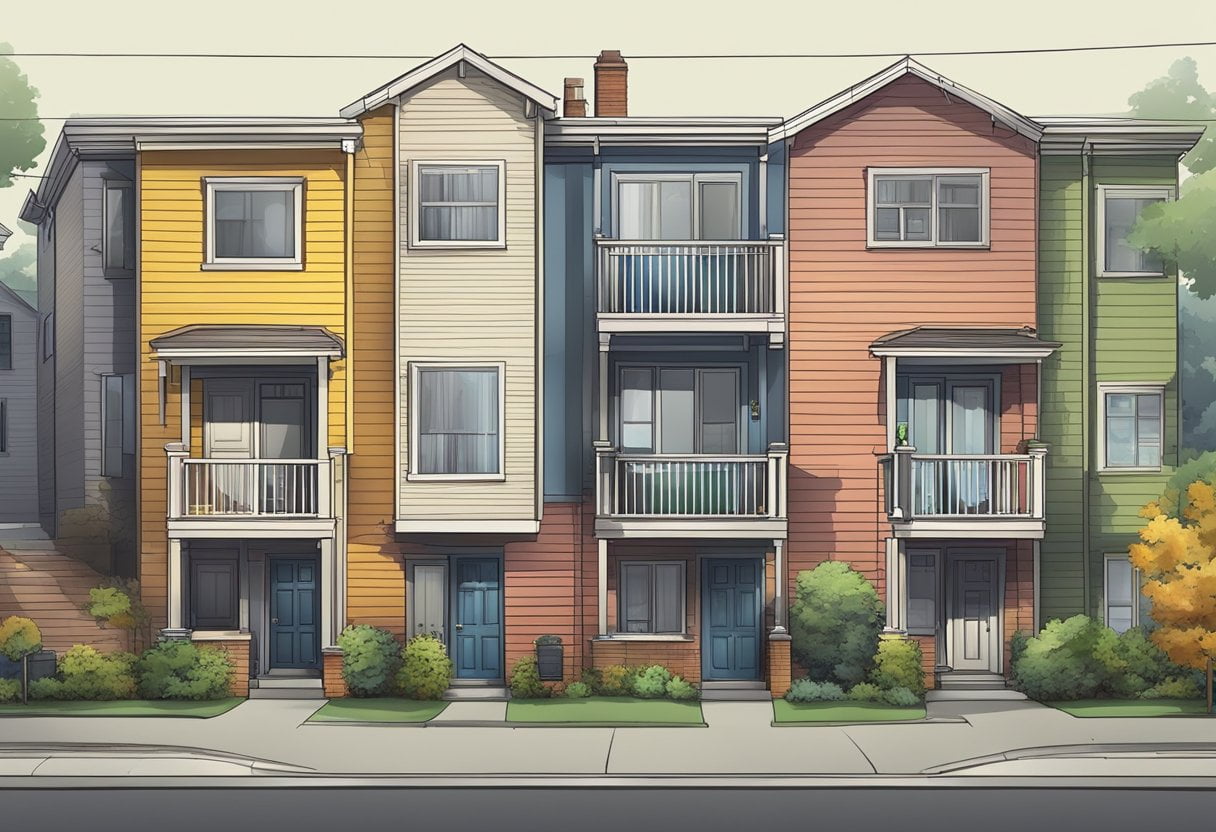
When considering a real estate investment in a multifamily home, the location and neighborhood are critical factors that can significantly impact the property’s value and your potential return on investment. Your due diligence in these areas is paramount.
Key Location Factors:
- Accessibility: Look for properties that offer easy access to main roads, public transportation, and essential services.
- Employment Opportunities: Favor neighborhoods close to employment centers to attract tenants.
Considerations for the Neighborhood:
- Safety: Check local crime rates as properties in areas with higher crime may be harder to rent and may not appreciate as quickly.
- Amenities: Proximity to parks, schools, shopping, and entertainment can increase rental appeal.
- Noise Levels: Areas close to loud venues or industries can deter potential tenants.
Market Trends and Forecasts:
- Research economic factors impacting the neighborhood that might affect future property values.
- Be wary of neighborhoods with high foreclosure rates which might suggest economic instability.
Impact of External Factors on Value:
- Some external factors, such as proximity to a shooting range, may reduce rental or resale appeal due to noise and safety concerns.
When you’re evaluating the neighborhood, your focus should be on both the present qualities and its potential for future growth or decline. Remember, in real estate investment, making an informed decision about location can be as critical as the property itself.
Ownership Costs Beyond the Mortgage
When you invest in a multifamily home, your financial considerations extend far beyond the mortgage payment. These expenses significantly impact your budget and investment return.
Homeownership and Maintenance Expenses
As a multifamily property owner, you’re responsible for the upkeep of multiple living spaces. Maintenance expenses typically include:
- Landscaping: Costs for mowing, edging, and tree-trimming.
- Common Areas: Cleaning and repairing shared spaces like hallways and laundries.
- Utilities: Even if tenants pay their own utilities, common areas and vacant units incur charges.
- Exterior Maintenance: Roof repairs, exterior painting, and other structural maintenance must be addressed.
Itemizing these expenses is crucial for tax benefits, as some maintenance costs for rental properties can be tax-deductible.
Insurance, Taxes, and Unexpected Repairs
Beyond maintenance, other key expenses include:
- Insurance: Premiums for landlord policies that cover the entire building, higher than single-family home insurance.
- Property Taxes: Calculated based on property value, which can be substantial for multifamily units.
- Unexpected Repairs: Plumbing issues, electrical problems, and appliance replacements often occur without warning.
These costs can fluctuate, and while insurance and tax payments are somewhat predictable, emergency repairs are not. Building a reserve fund for these unpredicted expenses is vital. Keep in mind, certain insurance premiums and property taxes may be eligible for tax deductions, softening their financial impact.
Exit Strategies and Resale Considerations
When you decide to sell your multifamily home, you’ll need to consider various exit strategies and how they can impact your resale process. The strategy you select can affect both your return on investment and the ease with which you can transition out of ownership.
- Buy and Hold: You may choose to keep the property long-term, aiming for appreciation in property value and ongoing rental income. However, this can limit liquidity if you need capital quickly.
- Sell Through a Real Estate Agent: If you decide to sell, a real estate agent can assist with marketing and navigating negotiations, but be prepared to pay commission fees, which will affect your net return.
- Seller Financing: Offering financing to your buyer can make your property more attractive and may provide a steady income stream. Yet, this requires a level of risk tolerance, as you effectively become the lender.
- Selling to Another Investor: An investor might be interested in your property, especially if it yields a steady return. This could expedite the sale but might not maximize your property value if sold quickly or under market rates.
- 1031 Exchange: To defer capital gains tax, you could use a 1031 exchange to roll proceeds into another investment property. This strategy requires strict adherence to timelines and rules, which may complicate the resale process.
Each option has its nuances and implications for your financial outcome. Timing, market conditions, property value, and your financial goals play pivotal roles in determining the most beneficial exit strategy for your multifamily home. Consider consulting with a financial advisor to align your strategy with your investment objectives.
Frequently Asked Questions
Understanding the disadvantages of multifamily home investment is critical before making a decision. These FAQs address common financial and management concerns.
What are the potential financial risks associated with investing in multifamily properties?
Investing in multifamily properties can come with higher initial costs and the risk of financial losses if rental incomes decrease or vacancies increase. Your cash flow can suffer if multiple units become vacant simultaneously or if unforeseen expenses arise.
How does the management complexity of multifamily homes compare to single-family homes?
The management of multifamily homes is generally more complex due to the higher number of tenants. This often requires more time and resources for tenant relations, repairs, and property upkeep compared to a single-family home.
What are the common challenges in maintaining a multifamily property?
Maintaining a multifamily property can be challenging due to more frequent repairs and maintenance issues that arise from having multiple tenants. This can result in a greater need for property management services and higher ongoing maintenance costs.
Can the investment in a multifamily home be justified given the potential rental income fluctuations?
Investments in multifamily homes can be justified if the rental income outweighs the fluctuations and costs. However, you must consider market conditions, location, and the ability to attract and retain tenants.
How do tax implications differ for multifamily property owners versus single-family home owners?
Multifamily property owners may face different tax implications, including the potential for higher property taxes and the ability to leverage tax deductions specific to rental properties. It is important to consult with a tax professional for personalized advice.
What factors should be considered when assessing the profitability of a multifamily home investment?
When assessing profitability, consider factors such as the property’s condition, location, rental market demand, financing terms, and operational expenses. A thorough analysis of these elements will help determine if the multifamily home can yield desired financial returns.
Statistics
- Investors allocated over $40 billion to multifamily real estate in the U.S. via private equity funds during 2021.
- Multifamily investment transactions totaled over $148 billion in the United States for the year 2021.
- Occupancy rates for multifamily properties have shown resilience, with a national average rate hovering above 95% as of 2022.
- Foreign investment in U.S. multifamily real estate remained robust, contributing over $16 billion to the sector in 2021.
- Rental growth for multifamily units has seen significant increases, averaging 3.6% year-over-year across major markets.
- The average capitalization rate (cap rate) for multifamily investments in the United States remained stable around 5% to 6% through late 2022.
- Class A multifamily properties often achieve the highest rent premiums, reflecting a rent differential of approximately 20%–35% above Class B assets.
- Investment in multifamily properties accounted for approximately 31% of the total U.S. real estate investment volume in the first three quarters of 2022.
External Links
- Investopedia outlines strategies for investing in multifamily real estate, offering a thorough overview for new investors.
- Freddie Mac’s Multifamily Outlook report provides insights into economic and market trends affecting multifamily investments.
- BiggerPockets provides a comprehensive guide on investing in multifamily properties.
- CBRE’s quarterly U.S. Multifamily Figures report gives valuable data on market trends.
- Mashvisor explains the basics of multi-family real estate investing and what makes it an attractive investment.
- Reonomy discusses the latest multifamily investment trends to watch.
- Property Metrics explains how to value multifamily property, which is crucial for investors.
- Udemy offers a course for those looking to understand the basics of multifamily real estate investing.
How To
How to Use Cap Rates in Multifamily Property Valuation
Capitalization rates, or cap rates, are a fundamental tool in multifamily property valuation. To use cap rates, first determine the property’s net operating income (NOI) by subtracting all operating expenses from the gross rental income. Then, research the average cap rate for similar properties in the same market to get a benchmark. Divide the NOI by the cap rate to estimate the property’s value. A lower cap rate typically indicates lower risk and a higher property value, while a higher cap rate suggests higher risk and a lower property value.



